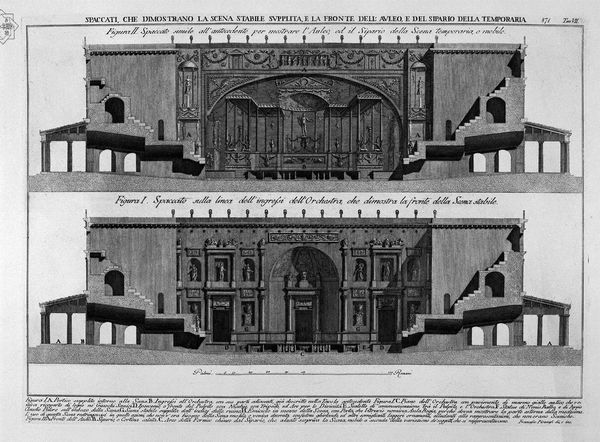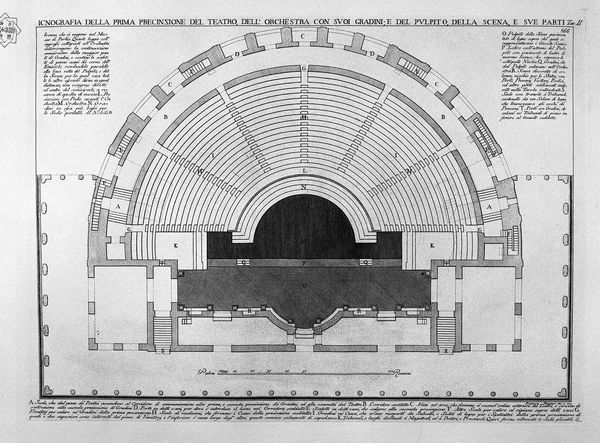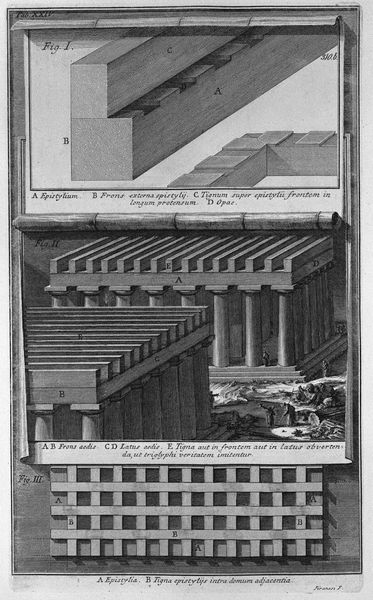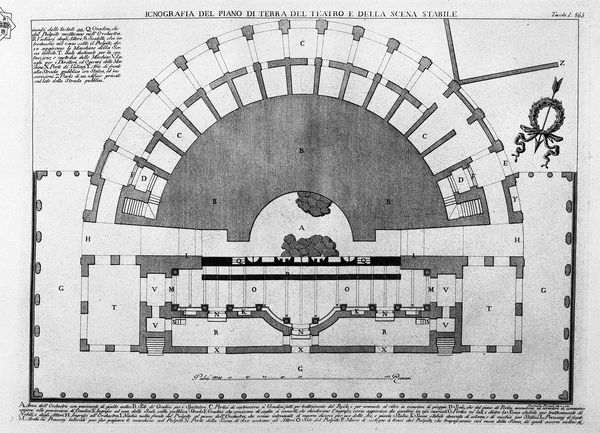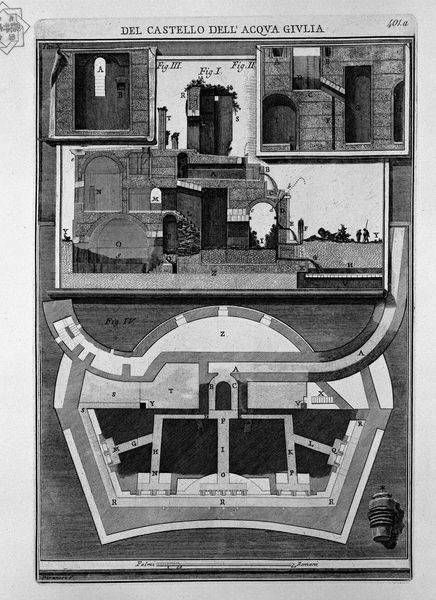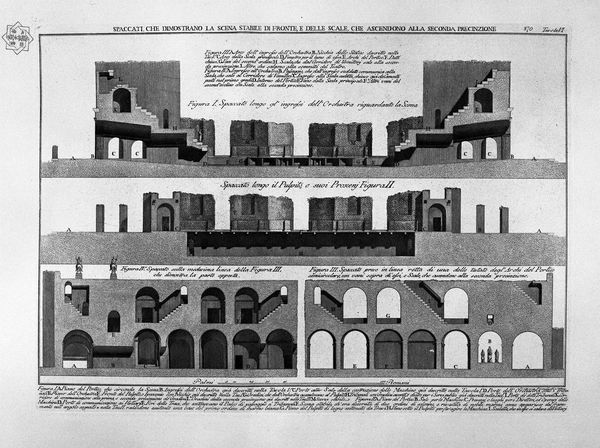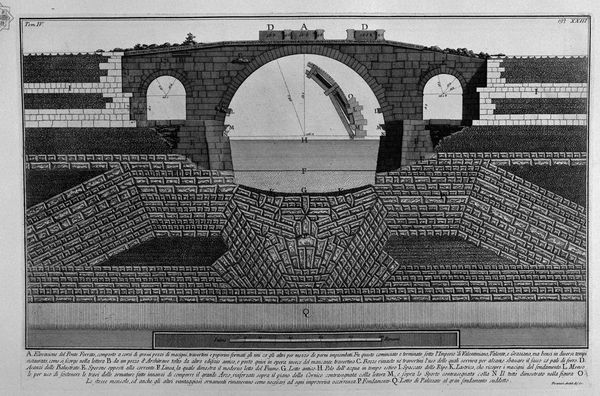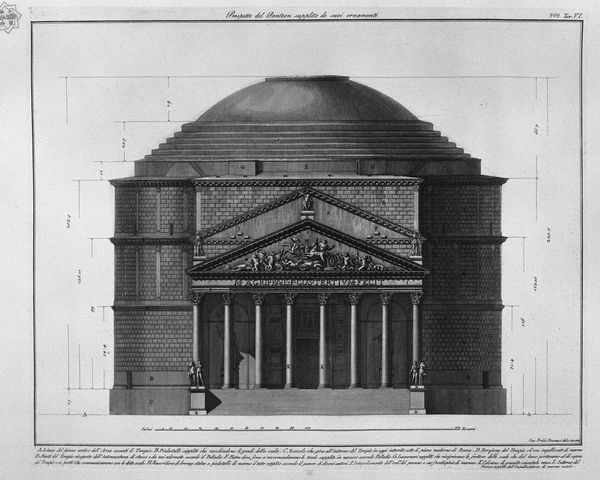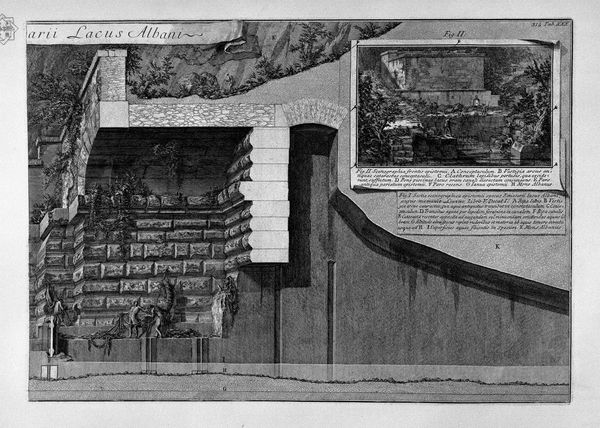
Split of the theater, and stage stable supple, and machine of wood, and painted canvases sosteneua of classrooms, and curtain
0:00
0:00
drawing, engraving, architecture
#
drawing
#
baroque
#
perspective
#
form
#
geometric
#
architectural drawing
#
line
#
architecture drawing
#
cityscape
#
engraving
#
architecture
Copyright: Public domain
Editor: This intricate drawing, titled "Split of the theater, and stage stable supple, and machine of wood, and painted canvases sosteneua of classrooms, and curtain" is an engraving by Giovanni Battista Piranesi. It reminds me of blueprints and I am fascinated by how it showcases the inner workings of what seems like a stage. How should we interpret this work? Curator: Considering Piranesi's focus, let’s analyze the materials depicted and their function. Note the emphasis on "machine of wood." Piranesi isn't just showing us architecture; he’s highlighting the infrastructure, the very means of theatrical production. How does understanding the labour involved, the carpentry, and the mechanics change your perception? Editor: I see what you mean. Before, I saw a beautiful rendering, but now I realize it’s emphasizing the *process* of building and operating a theatre. It challenges the typical focus on the performance itself. So the materiality here makes it about the labor, rather than high art? Curator: Precisely. We can also examine it within its social context. Who were Piranesi’s patrons? Knowing whether he created this for theatre designers, wealthy spectacle-goers, or even for himself, informs our understanding of the print's purpose and value, thus its role in consumption and in society. Do you see this shift of focus reflected in its formal qualities too? Editor: Well, the stark lines and technical precision feel very deliberate. The lack of color directs all our attention to the construction. It's almost like a celebration of craftsmanship, but also about the materials of the stage. I would have never picked up on it by just admiring the composition from an aesthetic viewpoint. Curator: Exactly. So by exploring materiality and social context, we move beyond a simple aesthetic appreciation and toward understanding the work's cultural and economic implications. Editor: I learned a lot! It’s interesting how focusing on the nuts and bolts opens up a completely different level of analysis than I was expecting. Thank you!
Comments
No comments
Be the first to comment and join the conversation on the ultimate creative platform.
